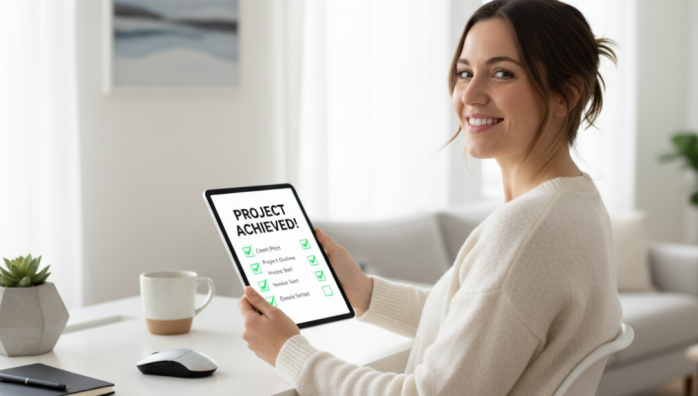Streamlining Client Onboarding for Freelancers
by admin in Productivity & Tools 10 - Last Update November 19, 2025

I used to dread the first week with a new client. It was a chaotic mess of emails, forgotten details, and scope creep from day one. Honestly, it felt like I was starting every project on the back foot, trying to piece together what was actually agreed upon. After one particularly messy start that nearly cost me a great client, I realized something had to change. My creativity was being drained by administrative chaos before I could even begin the real work. That’s when I became obsessed with building a seamless, repeatable onboarding system.
Why a smooth onboarding process is a non-negotiable
For years, I thought of onboarding as just \'the stuff you do before you start.\' I was wrong. It’s the first real taste a client gets of what it\'s like to work with you. A streamlined process doesn\'t just look professional; it builds immediate trust. It shows you’re organized, you respect their time, and you have a plan. It’s your first opportunity to lead the engagement, set clear boundaries, and manage expectations. I found that when I nail the onboarding, the rest of the project has a 90% higher chance of running smoothly. It’s a game-changer.
My foolproof 5-step client onboarding checklist
After a lot of trial and error, I\'ve refined my process down to five core steps. This isn\'t a rigid, corporate framework; it\'s a flexible guide that brings clarity and calm to what was once a stressful time. I’ve found this sequence works wonders for setting the right tone from the very beginning.
Step 1: The discovery call and proposal
This is more than just a sales call. My goal here is to listen intently and diagnose the client\'s actual problem. I stopped just presenting my services and started asking better questions. After the call, I send a concise proposal that doesn\'t just list prices; it restates their goals in their own words and clearly outlines the proposed solution, scope, and timeline. I always include a clear \'next step\' to sign the agreement electronically.
Step 2: The contract and initial invoice
Once the proposal is accepted, the contract and first invoice go out immediately. I used to handle these separately and it caused delays. Now, they are a single package. A clear contract protects both of us, and getting the deposit paid solidifies the commitment. I use a simple template that covers scope, payment terms, and communication protocols. No work starts until this step is complete—a hard lesson I had to learn.
Step 3: The welcome packet
This is my secret weapon for looking incredibly professional. The moment the contract is signed, the client receives an automated email with a link to a simple \'Welcome Packet.\' It\'s not a physical item; it\'s a beautifully designed PDF or a private web page. It includes: a confirmation of our project goals, a schedule of key dates, instructions on how to use our shared project management tool, my business hours, and the best way to contact me. It answers all their questions before they even think to ask them.
Step 4: The official kickoff meeting
With the administrative tasks handled, this meeting is all about the project itself. We review the goals, timeline, and communication plan outlined in the welcome packet. This is the time to introduce any tools we\'ll be using, like a project management board or a shared drive, and ensure the client is comfortable with them. It’s a collaborative session that aligns everyone and builds excitement.
Step 5: Setting up the shared digital workspace
Immediately after the kickoff call, I set up our shared digital environment. Whether it\'s a Slack channel, a Trello board, or an Asana project, I create the space and invite the client. I pre-populate it with the project timeline, key files, and a \'Start Here\' task. This makes the client feel supported and shows that I’m already executing the plan we just discussed.
The tools I rely on for automation
You don\'t need a complex, expensive tech stack. I started with simple email templates and a checklist. Now, I use a combination of tools to make this flow effortlessly. An e-signature tool is essential for contracts. A good project management app helps create templates for different project types. And simple automation tools can trigger the welcome email as soon as a contract is signed. The goal isn\'t to buy fancy software; it\'s to remove manual friction points for both you and your client.
Ultimately, streamlining my client onboarding wasn\'t about adding more work. It was about doing the right work upfront to save myself countless hours of confusion and frustration down the line. It\'s an investment in peace of mind, and for me, that\'s priceless.












